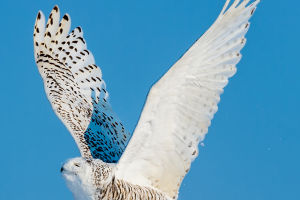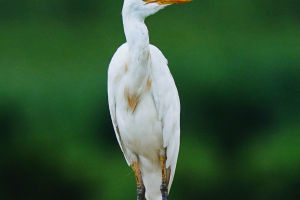Many of us get excited each spring when our migratory birds return. One of the birds that is most anticipated each year is the Baltimore oriole. These birds are absolutely beautiful. Their fiery orange and yellow plumage makes them look like they belong in a tropical rainforest! And their beautiful songs are a cheerful addition to any backyard.
Baltimore orioles prefer a deciduous (trees and brush that shed their leaves annually) forest habitat, but they usually remain at the forest edges instead of deep in the woods. They've also adapted well to life around people and are often seen in yards and parks. Read on to learn even more about these beloved birds.
1. Orioles love the color orange.
Orioles are attracted to the color orange because it mimics many of the native flowers they drink from. Unfortunately, many backyard birders make the mistake of putting orange coloring in their oriole nectar, but this isn’t necessary. Instead, you can use an oriole feeder with an orange cap or base. In addition, orioles also love to eat fruit, and oranges are one of their favorites! Try placing halved or quartered oranges in your backyard for them to consume.
2. Orioles can’t resist caterpillars.
Although many people associate orioles with nectar and jelly, they mostly eat these foods to replenish their strength after migrating. However, once orioles have started to nest, they switch to eating insects and spiders almost exclusively. Their favorite insect types are caterpillars like gypsy moth caterpillars, cabbage worms, and tent caterpillars. They even eat spiny and hairy caterpillars, which most other birds avoid!
3. Orioles have a sweet tooth.
While orioles have a prodigious appetite for insects, they also possess a serious sweet tooth (beak?). One of the most surefire ways to attract a Baltimore to your backyard is to leave out a few orange slices, but other sweet fruits, a dollop of grape jelly, or even a hummingbird feeder will also do the trick. When eating fruits and berries, Baltimore Orioles sometimes practice an unusual eating method called gaping: After inserting their beak into whatever they are eating, they spread their beak out to create a tunnel of sorts and use their tongues to lap up the juices.
4. They’re extremely sensitive to pesticide use.
Pesticides are just about the worst thing you can use if you want to attract orioles! Orioles eat pests! Their diet is made up almost entirely of caterpillars, spiders, and insects that pesticides are designed to kill. If all these creatures die, the orioles will have nothing to eat. Since they don’t eat birdseed or other common bird foods, they’ll have to move on to find a meal. Pesticides can contaminate other sources of food. For example, when Orioles arrive at their breeding grounds after migration, they eat fruit and nectar for quick energy. Pesticides can easily blow onto fruit trees and berry bushes, contaminating this food source and making the orioles sick. Orioles may be better at controlling pests than the chemicals anyway! One of the best facts about orioles is that they eat many insects that cause damage to gardens but leave beneficial insects and pollinators alone. So, skip the pesticides and invite an oriole to dine in your backyard instead!
5. Oriole nests are incredible structures!
Orioles are the master engineers of the bird world! They create intricately woven baskets that hang from tree branches. The materials can vary, but generally, orioles prefer long fibers pulled from immature trees or other hardy plants. The baskets have three distinct layers. The outer layer is made of tough, durable fibers woven together like a basket. A second layer is made of springier materials like grass or bits of leaves. Finally, the interior is lined with downy material like cottonwood or cattail fluff, feathers, or delicate plants. This complex nest is so durable that up to 85% of oriole nests are still hanging the next spring! Despite their durability, orioles rarely reuse a nest. However, they will take materials from existing nests to build new ones.


